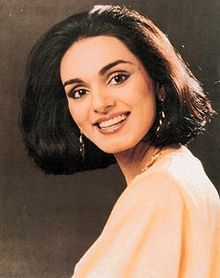When you are in my second home state Kerala, you must
take the word "kuda" seriously. The God of God's Own Country isn’t kind towards people who don’t carry
a kuda at all times. Last time I came to Kochi, I realised my slip-up the
moment I came out of the brand new airport terminal. I didn’t have a kuda, and
it was raining – as my authentic Mallu friend Damu would say – elephants and
whales. I got completely drenched by the time I boarded a bus. Gentle reader,
being intelligent and perceptive, you would have understood what kuda stands
for, and possibly also patted my virtual back to tell me how delicately and brilliantly I
introduced the central position of an umbrella in the life and space of Kerala!
Moving back to my previous journey, the bus moved
through pouring rains along a straight lonely road in a wide lush green plain
dotted with countless coconut trees soaked to their bones. There was a partly
dry family of Punjabi tourists who had taken the bus along with me. Two kids,
both girls, were on nimbus cloud nine as they saw a coconut tree possibly first
time outside a picture book. Excited child voices rang out accompanied by happy
claps: ‘Mummy, Daddy, see! Coconut tree! Coconut tree!’
In my mind I marvelled at the child’s ability to extract
happiness from nowhere. If only we could regain that magic somehow! And I told
them in my head, ‘Save your excitement buddies. You are going to see millions
of them. You are going to see them even in your dreams.’
That happened on 21 June 2011. And there is a reason for
me – despite my dysfunctional memory – to remember the day clearly. I wish I hadn’t
been forced to make that journey. Those two days will remain as an unhealed
wound at a corner of my heart. … But yesterday, although I’d forgotten the kuda
again, I was greeted with a smiling sunny afternoon sky as I got off the aircraft. What a stroke of fortune.
A taxi was waiting and as we covered the short distance
from the airport to Kariyad junction where we turned into the highway, there
were hardly any coconut trees. All I saw were buildings after buildings:
hotels, pubs, restaurants, homes, large stores, and more under-construction
structures. Where have all the coconut trees gone? Or did my driver take a
different route? I’ll have to check.
On the positive side, the National Highway 47 between
Kanyakumari and Salem, which used to be a pain in wrong parts of your body
earlier, has become four lanes and
smooth as a silk ribbon. Long live National Highway Authorities of India!
We came along the highway for most of our 54 kilometre
journey, but for the last stretch to Thrissur, we left it at Nadathara. The road
became narrower, and the houses on either side became more intimate. There were
beautiful bungalows that seemed to be straight out of children’s books
throughout. Most of them have sloping red tiled roofs with a small portico in
front and every one of them is perfectly balanced. The sculptures you come
across in Kerala are generally kitsch, but the people here have a fine sense of
architecture (besides money in their banks!).
It was good to say hello to Thrissur, one of the few
cities in Kerala I hadn’t visited during my years in the state. As I looked out of
the balcony of my fourth floor room, the Latin Cross on the spire above a
nearby church had just come alive in fluorescent red. Are padres coming close
to communists? …
The lazy meanderings of an idle mind stopped suddenly.
Joe needn't have died in an accident on 19 June 2011.
The lazy meanderings of an idle mind stopped suddenly.
Joe needn't have died in an accident on 19 June 2011.
Thrissur / 27 February 2016

